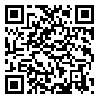Volume 12, Issue 47 (12-2018)
Research on Addiction 2018, 12(47): 157-176 |
Back to browse issues page
Download citation:
BibTeX | RIS | EndNote | Medlars | ProCite | Reference Manager | RefWorks
Send citation to:



BibTeX | RIS | EndNote | Medlars | ProCite | Reference Manager | RefWorks
Send citation to:
Shabahang R, Rezaei S, Bagheri Sheykhangafshe F. The Effect of Subliminal Presentation of Smoking Pictures on Addiction Potential, Addiction Acknowledgement, and Addiction Craving. Research on Addiction 2018; 12 (47) :157-176
URL: http://etiadpajohi.ir/article-1-1794-en.html
URL: http://etiadpajohi.ir/article-1-1794-en.html
Tehran University
Abstract: (5645 Views)
Objective: The present study was conducted to determine the effect of subliminal presentation of smoking pictures on addiction potential, addiction acknowledgement, and addiction craving. Method: A quasi-experimental research method along with pretest-posttest/ control group design was employed in this study. The statistical population of this research included the male smokers who had presented to Rasht addiction treatment clinics (District one) in 2017. From among them, 40 men were selected through convenience sampling method and were randomly assign to one experimental group (n=20) and one control group (n=20). The Iranian Addiction Potential Scale (Zargar, 2006), Addiction Acknowledgement Scale (Weed et al., 1992), and Drug Craving Scale (Somoza et al., 1995) constituted the data collection instruments. Following the administration of the pretest, smoking pictures were subliminally presented to the experimental group, while the control group was exposed to subliminal neutral color pictures. After completing the task, both groups were subjected to the post-test. Results: The results of this study showed that there was a significant difference between the mean ranks of addiction craving scores in the experimental group, which means that the rate of craving increased in the experimental group in comparison with the control group. However, there was no significant difference in variables of addiction potential and addiction acknowledgement (P> 0.05). Conclusion: Considering the significant effect of subliminal presentation of smoking pictures on addiction craving, the subliminal presentation can be used in clinical settings as a therapeutic and preventive method for reducing addiction craving.
Keywords: subliminal presentation, smoking pictures, addiction potential, addiction acknowledgement, addiction craving
Type of Study: Research |
Subject:
Special
Received: 2018/07/18 | Accepted: 2018/11/9 | Published: 2018/12/3
Received: 2018/07/18 | Accepted: 2018/11/9 | Published: 2018/12/3
| Rights and permissions | |
 |
This work is licensed under a Creative Commons Attribution-NonCommercial 4.0 International License. |





